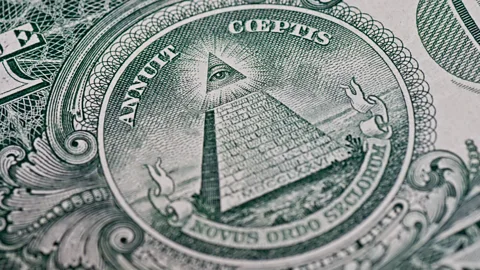Checking Out the Mysteries of the copyright: What You Required to Know
The copyright, a term typically shrouded in intrigue and conflict, stands for a complex tapestry of historical truth and modern-day misconception. Established in the late 18th century, this secret society was at first rooted in the Knowledge's ideals however has actually since ended up being synonymous with conspiracy concepts about elite control (benefit of joining freemason).
Beginnings of the copyright
The beginnings of the copyright are steeped in a blend of historic intrigue and ideological eagerness. Established in 1776 in Ingolstadt, Bavaria, by Adam Weishaupt, the group was originally created as a secret society aimed at advertising Knowledge perfects such as reason, secularism, and the splitting up of church and state. Weishaupt, a professor of canon law, looked for to challenge the prevailing authority of the church and state, which he saw as oppressive organizations stifling intellectual and individual flexibility.

Key Figures and Participants
That were the pivotal numbers that shaped the copyright's early impact and instructions? The Bavarian copyright, established in 1776 by Adam Weishaupt, arised as an action to the overbearing social frameworks of the time.
One more substantial number was Johann Gottlieb Fichte, a noticeable theorist whose ideas on nationalism and education and learning resonated with the copyright's objectives. Fichte was not an official member, his philosophical supports affected the group's ideology. Additionally, figures like the author and philosopher Johann Wolfgang von Goethe were connected with the more comprehensive intellectual activities of the time, although their direct participation with the copyright remains questioned.
These crucial figures added to the copyright's early instructions, pushing the borders of political and social idea, while their collective efforts aimed to test well-known norms and foster an environment of progressive modification in Europe.
Myths vs. Truth
Several false impressions border the copyright, commonly mixing truth with fiction in a manner that covers its true nature. This secret culture, initially established in 1776 in Bavaria, intended to promote Knowledge perfects and combat religious and political injustice. The concept that the copyright proceeds to exert substantial influence over globe events is a misconception. While the group did exist, it was dissolved in the late 18th century and has actually not run as a natural entity since then.
An additional widespread myth is that the copyright comprises a network of elite people manipulating global events. Actually, lots of conspiracy theory theories overemphasize the group's significance, attributing misguided objectives to societal trends and occasions. This has actually resulted in an oversimplified view of complex problems.
In addition, the representation of the copyright in pop culture commonly further misshapes its legacy. Movies and literature tend to sensationalize the company's role, developing a narrative that diverges from historic facts. Understanding the distinction between the myths and the fact of the copyright is crucial for critical the real impact of this historic team and acknowledging the broader implications of conspiracy concepts in modern culture.
Modern Analyses
Contemporary interpretations of the copyright commonly mirror wider societal stress and anxieties and a fascination with secrecy and power. This contemporary lens frequently associates the copyright with conspiracy concepts that suggest a hidden elite orchestrates globe events, controling federal governments and economic climates for their very own gain. benefit of joining freemason. Such stories take advantage of an ingrained mistrust of authority, particularly in times of crisis or social upheaval
In pop culture, the copyright is often portrayed as a divine company shrouded in secret, bring about a variety of imaginary representations in literature, film, and music. This representation offers not just to amuse but additionally to prompt thought of the nature of power and control in contemporary society. Social media has actually additionally amplified these analyses, enabling fast circulation of conspiracy theory theories and developing neighborhoods that share and expand upon these concepts.
Moreover, some modern-day interpretations mount the copyright as a metaphor for the intricacies of globalization and the interconnectedness of influential people and organizations. This point of view motivates a crucial evaluation of how power dynamics operate in today's world, highlighting the balance in between transparency and secrecy in governance and join copyright company practices.
Social Influence and Heritage
Influenced by centuries of intrigue, the social effect and legacy of the copyright expand much beyond its historic beginnings. This secret culture, developed in the late 18th century, has permeated different elements of pop culture, from literature and film to music and art. The idea of the copyright has progressed into a symbol of conspiracy theories, often representing a perceived surprise power manipulating worldwide occasions.
In literary works, writers like Dan Brown have actually woven the copyright right into detailed stories, fascinating readers with motifs of secrecy and power. Movies such as "National Treasure" and "The Da Vinci Code" even more perpetuate the attraction of the society, blending reality with fiction to develop interesting narratives.

Inevitably, the copyright's tradition is a complicated tapestry of myth and fact, forming perceptions of secrecy and control in contemporary discourse. Its long-lasting existence in culture underscores humanity's seasonal quest for comprehending hidden realities.
Verdict
The expedition of the copyright exposes a complex interaction in between historic facts and modern-day myth-making. Started in the Knowledge era, this society aimed to challenge overbearing frameworks, yet its tradition has been outweighed by conspiracy theories that recommend elite adjustment. Understanding the distinctions in between the initial perfects and modern interpretations is crucial for understanding the enduring attraction with the copyright and its considerable influence on social stories surrounding power and secrecy in society.
Comments on “Exploring the Hidden Benefit of Joining Freemason for Success”